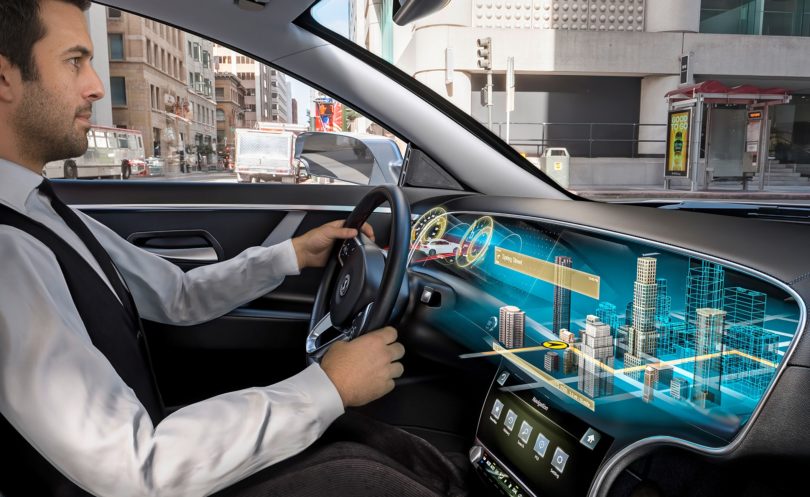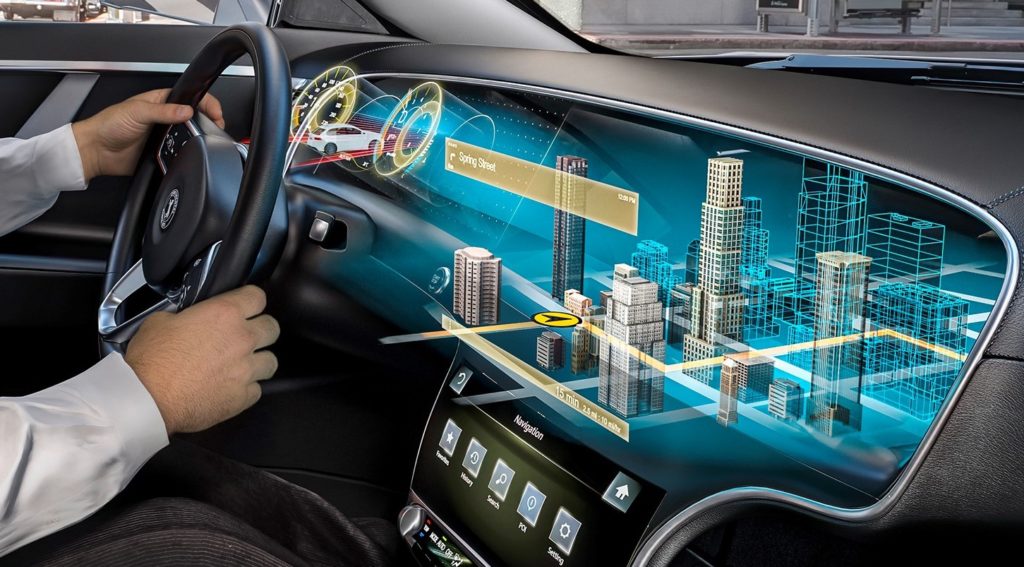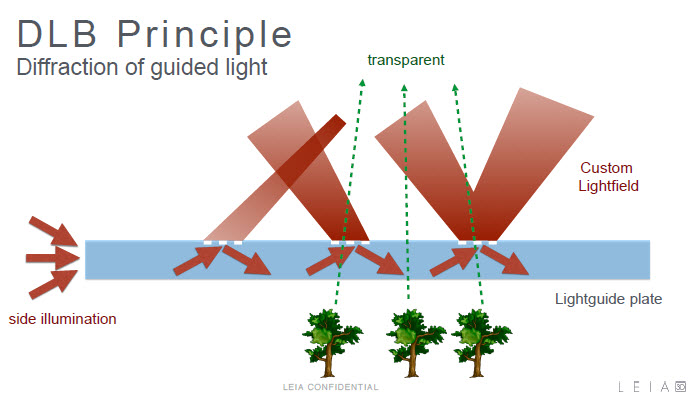Continental and Leia Partner for a New Glasses-Free Dashboard
Automotive technology company Continental has partnered with the Silicon Valley display technology startup Leia Inc to develop an innovative Natural 3D Lightfield Instrument Cluster, a cutting-edge and revolutionary cockpit solution capable of generating a rich 3D experience for all the passengers in the vehicle without the need to wear any mixed reality glasses or headsets. This innovation will give users an “as you see it” visibility with the naked eye that will greatly enhance the passenger and driver experience, enabling drivers to have a better driver depth of perception in their vehicles without any adaptive eyewear. What this means is that we are headed towards a future of glasses-free head-up display (HUD) which could arrive as soon as 2022!

This headset or glasses-free 3D lightfield dashboard display will deliver considerable improvement in the in-vehicle safety and comfort not just for drivers but also for the passengers. The technology could hit the market by as early as 2022 so it won’t be long before you have the most revolutionary dashboard display experience that you could ever imagine.
The technology has been christened “Natural 3D Lightfield Instrument Cluster” and will deliver a higher level of interactivity between occupants in the vehicle and the machine by including various immersive elements such as key information highlighting, 3D depth, sparks as well as other lighting effects that will present useful data to users in a safe and convenient fashion.
The Lightfield cockpit is an evolutionary concept in the designing of human-machine interactions in the automotive sector. Lightfield displays represent the next generation medium, making it possible to realize a comfortable perception of the 3D depth and render highlights, sparkles along with complex light effects. Lightfield displays allows for the safe presentation of information to drivers in real-time. This kind of presentation also makes it possible for drivers to be more comfortable and intuitive in their interactions with the vehicle. The Lightfield displays also allow passengers in the front and back seats to share their 3D experiences with the driver. Series production for the new system is slated to start by 2022.
The automotive industry faces the serious challenge of developing intelligent concepts that will facilitate human-machine interaction. Automakers grapple with the challenge of creating solutions that help enhance the driver experience and enable the driver to easily and more efficiently interact with the vehicle without taking their eyes off the road. The Lightfield display delivers a very high quality third dimension into the vehicle while helping enhance both safety and comfort. Continental’s solution gives automakers a novel solution to create a very rich driving experience.
By leveraging Leia’s Lightfield display technology, the team at Continental has been able to bypass the need to use a conventional head-tracker cameras. It does this by producing eight different perspectives of the same object on the display. When you view this from different angles, it creates a 3D effect without the need for additional glasses or a smart device. A clear and easy-to-view 3D image can be realized in all kinds of lighting conditions thanks to Leia’s Diffractive Lightfield Backlighting (DLB) technology which is popular with some of the leading tech companies like Verizon and AT&T.

Continental and Leia will in the future work on introducing extra features to the existing suite of Lightfield tools. These could include internet browsing functionality, video calls, music streaming, watching TVs and movies along with various other augmented reality streaming functions. Currently, there is the option for third-party developers to create their own “holographic” apps for the LeiaLoft content platform through the use of the Automotive Software Development Kit (SDK).
With time, the ability to visualize content on wide displays that have been specially designed to provide in-car comfort will get more refined and enjoyable than using a smartphone. It will create more capabilities such as the opportunity to deploy internal and external camera systems to provide augmented reality or video calling functions. Continental hopes to explore such functionalities with this partnership.
Cars represent the next frontier in mobile innovations. With advances in augmented reality displays, future cars could in practice provide bigger and more immersive versions of the current smartphones that will offer users a fuller 3D awareness of the environment.
Vehicles provide a logical avenue for deploying the Lightfield ecosystem for immersive applications in gaming, social sharing, video sharing and even ecommerce applications. The Lightfield technology pioneered by Leia does not require a head-tracker camera to work which gives Continental’s 3D display an edge, both in terms of cost and practicality. The 3-D image which has been generated by the Lightfield display will be comprised of eight perspectives of a similar object which will vary subtly based on the point-of-view through blocking and refracting light.
The new 3D Lightfield application consisting of Leia’s Diffractive Lightfield Backlighting (DLB) provides the next generation of conventional 3D displays, giving users a crystal-clear screen visualization even if the display is exposed to sunshine.

Leia’s Lightfield technology was launched commercially in the US through the AT&T and Verizon smartphone displays. The current experience comprises the Lightfield displays as well as a range of automotive use-case applications that Continental provides.
There is a Leia creative toolkit which can be used in creating or converting content to the Lightfield format and this also entails automatic settings for visual comfort such as warnings coming from the driver assistant system which are rendered in 3D, a graphic display for the parking assistant (like the 360-degree bird view assistant) or clearly displayed directions information from the navigation system. There are even enhanced greetings from the vehicle system rendered in 3D logo animations.
The new Continental-Leia collaboration will also help augment the LeiaLoft content platform thereby enabling both third-party developers and car manufacturers to easily develop “holographic” apps for future vehicles. This Automotive Software Development Kit will allow developers to gain a 3D access to the interior and exterior environment of the vehicles and activate various applications ranging from the park assist to holographic navigation or augmented reality on the central information display or the digital cluster.
https://virtualrealitytimes.com/2019/07/12/continental-and-leia-partner-for-a-new-glasses-free-dashboard/https://virtualrealitytimes.com/wp-content/uploads/2019/07/This-could-be-dashboard-of-the-future-600x332.jpghttps://virtualrealitytimes.com/wp-content/uploads/2019/07/This-could-be-dashboard-of-the-future-150x90.jpgAugmented RealityTechnologyAutomotive technology company Continental has partnered with the Silicon Valley display technology startup Leia Inc to develop an innovative Natural 3D Lightfield Instrument Cluster, a cutting-edge and revolutionary cockpit solution capable of generating a rich 3D experience for all the passengers in the vehicle without the need to wear...Sam OchanjiSam Ochanji[email protected]EditorVirtual Reality Times - Metaverse & VR
